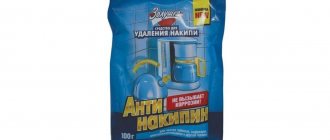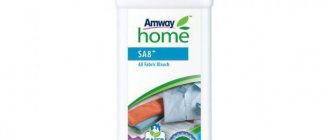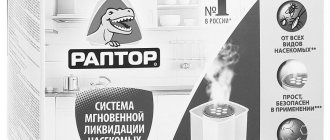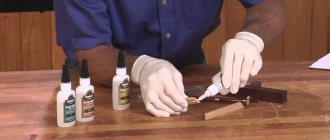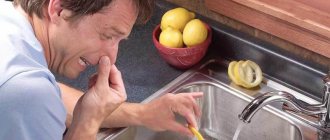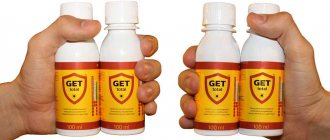Bleach solutions, when stored for a long time, turn out to be less active, so they should be prepared for a period of no more than a week. The powder has a pungent odor and is white or gray in color. Undoubtedly, the solution contains a wide range of uses, including the fight against infectious agents. Bleach is effective against human immunodeficiency virus, tuberculosis and hepatitis. Bleach is indispensable for whitewashing walls for all types of infections. Here's about plastering walls for wallpaper. A good quality product contains 25 to 30% active chlorine. When working with this solution, it is necessary to protect the respiratory system, eyes and dermis. Instructions for using bleach are given in this article. It is interesting to know that the production of bleaching powder from chlorine was invented by the English chemist Charles Tennant back in 1799.
Specifics of making the clarified composition - how to dilute and prepare the solution, instructions
To disinfect the home, it is necessary to dilute the 10% clarified composition of the drug. You will need a kilogram of the substance, which is added to a small volume of water at room temperature. Mix all the ingredients with a wooden spatula and add liquid to the size of ten liters (you must make a note on the container in advance).
Next, the contents are covered and left for a day in an unlit room. The mixture that remains must be poured into a darkened bottle and sealed hermetically with a closure made from cork tree bark.
The container must have a label with the date of preparation and the name of the person in charge. A 10% clarified composition purchased in this way can be stored for no more than 6 days.
To prepare working solutions, the required amount of 10% solution is diluted with water.
Here's how to dilute putty. For example, to make a 0.2% solution, take 200 milliliters of a 10% bleach solution and mix it with 10 liters of water. Working solutions of bleach are used throughout the day or shift.
Cooking diagram
Thus, the preparation of the solution is as follows:
- 0.2% of the composition of the substance is necessary to destroy pathogens of infectious diseases on equipment;
- from 0.2 to 0.5%, and if necessary, a larger percentage of the drug required for processing equipment;
- 1% composition for eliminating pathogens of infectious diseases on floors, walls, doors. Here is about puttying a wooden floor;
1% for disinfection of floors, walls
- 2% of the drug for cleaning tools, car interiors. Here we talk about how long it takes for car putty to dry;
2% for car interior cleaning
- 5% for cleaning sanitary products;
5% for cleaning sanitary products
- 10% for disinfection of the bathroom and toilet. Here about bathroom furniture made from MDF.
10% for disinfection of the bathroom and toilet
The powder contains approximately 28% active chlorine. The disinfecting properties of a chemical can be enhanced by adding a specialized activator, which can be an aqueous solution of ammonium hydroxide.
The prepared substance is one of the most effective bactericidal drugs, and therefore the most in demand.
Percentage composition - how to dilute and use the mixture for processing
Percentage of working substance: 0.5%, 1%, 3%, 5%. Amount of 10% clarified bleach stock solution in liters: 0.5, 1, 3, 5. Volume of water in liters: 9.5, 9, 7, 5
General cleaning of the department
About twice a month, all rooms in the hospital are thoroughly cleaned; all patients are removed for this purpose. All furniture must be moved or removed from the rooms altogether, depending on which department is being cleaned. Disinfectant cleaning involves washing the ceiling, walls, windows, lampshades, and other pieces of furniture. The floor is washed first with soapy water and then with chlorine solution. After the work is completed, the room is well ventilated and the furniture is returned to its original place. Wiping bedside tables, radiators, and sinks is done every day.
Safety Notes
According to the degree of influence on the body, bleach has a toxic effect. Purchasing bleach means seriously taking care of its precise transportation and conservation.
The main thing to remember here is that the products of the chemical industry are considered a powerful oxidizing agent (not flammable on their own) and, when coming into contact with other organic solutions, can provoke their ignition.
Containers containing bleach can ignite when heated, an explosion can cause the element to bond with petroleum products, as well as impact and friction. After disinfection with chlorine substances, it is recommended to ventilate the room.
You should know that the instructions for using slaked lime are considered an important step before starting disinfection procedures. Here is its formula. When working with this substance, it is necessary to use personal protective equipment: gloves, respirators, special safety glasses and rubberized aprons.
Toxicity
It is necessary to purchase chemical products after the consumer has read all the necessary recommendations for use with the drug. One should not lose sight of the likely consequences of improper use or direct contact with dermatological surfaces and inhalation of a caustic substance.
Once on the skin and mucous membranes, unpleasant pain, swelling and superficial ulcers of various sizes occur.
If the substance enters the respiratory tract, it causes shortness of breath, difficulty breathing and a sore throat.
There is also lacrimation, pain in the abdomen, nausea and yellowing of the dermis. First, you must immediately wash off the entire solution from the body, including the eyes and nasopharynx, with plenty of water. Then the victim should be taken outside and given milk until medical personnel arrive.
Storage and shelf life of chlorine solution
The substance must be left out of the reach of children and animals. Information with the name of the drug and expiration date is always printed on the packaging. Storage bags are made of polyethylene and are closed.
The main conditions for saving are:
- warehouses without heating;
- protection from light;
- regular ventilation;
- the floors are asphalted, brick or concrete.
Shelf life: 12 months.
Poisoning
Intoxication can result in complete loss of consciousness or even lead to the death of the victim.
When interacting with this element, the main thing is to be extremely careful and carefully read the instructions for using bleach.
Intoxication with bleach is possible in 2 ways: through intensive inhalation of the vapors of the drug, and the penetration of toxic elements into the body through the skin or gastrointestinal tract.
Bleach poisoning is likely in the following cases:
- the predominance of the maximum possible amount of toxic substances in water;
- when used in closed, unventilated rooms;
- ignoring recommendations for making solutions. Here are the proportions of cement-lime mortar for plaster;
- visiting swimming pools with an increased level of the drug;
- occurrence of problems in production;
- lack of protective equipment.
When children are in the building, 100% care must be taken to protect them from the effects of toxic chlorine-based products.
Intoxication
4 levels of intoxication are emphasized due to the severity of the person’s condition. The first level is characterized by tickling in the throat area due to damage to the mucous layer of the respiratory tract. There is severe lacrimation, coughing, and a feeling of chlorine aroma, even when in the fresh air.
Treatment of such a condition during intoxication will not be required, since after a certain period everything goes away on its own. The second level of severity contains the following properties - a person begins to choke, discomfort occurs in the chest area, and sudden tingling in the eyes.
In this condition, you should immediately seek medical help. Otherwise, there is a risk of developing swelling of the respiratory organs.
The third level is a severe form of intoxication, which is formed under the influence of a person’s long-term presence in a room with a toxic drug.
Heavy breathing may eventually stop if you faint. Muscle spasms and cramps also appear. The veins in the neck become very distended. The victim should be immediately taken to intensive care, connecting the patient to an artificial respiration apparatus.
The fourth level is a rapidly flowing stage. If timely assistance is provided to the victim, it will not give the slightest positive change, but will only lead to death in a matter of minutes.
Precautionary measures
When working with chlorine-containing substances, precautions must be taken carefully. The use of personal protective equipment is required: rubber gloves, masks, goggles. If a chlorine-containing preparation gets on the skin or mucous membranes, it is necessary to rinse the affected area with water and consult a doctor.
Chlorine is also dangerous if inhaled, so work should be carried out in well-ventilated areas. The reagent can also damage the surfaces being treated, so it is better to test the product on a small area first. If after 10 minutes the structure and color have not changed, you can start cleaning.
First aid for bleach poisoning
If a person has been poisoned by a chlorine substance, then you need to know what to do first. With proper first aid, it is possible to eliminate many dangerous consequences.
When intoxication has occurred at a medium and severe stage, in this case it is initially necessary to take measures to eliminate the victim’s contact with the chlorine element and seek help from doctors as soon as possible.
First aid contains the following recommendations:
- the person providing assistance must protect himself with a bandage to avoid inhaling harmful fumes;
- guarantee the victim a supply of clean air. But, if the level of intoxication is greater than the second, this will not help;
- if the solution enters the food tract, provide the person with plenty of drink , and also provoke a gag reflex. Then you need to drink pills of the drug that act as a strong adsorbent;
- as a result of eye damage, wash them with a weak soda solution;
- if the drug gets into the oral cavity, rinse thoroughly with soda, drawing this composition through the nasal passages;
- when there is a sore throat and intense coughing, it is necessary to take anti-cough pills for 3 days;
- in case of loss of consciousness, it is necessary to bring ammonia and try to bring the victim to his senses, and if breathing stops, try to perform an artificial “mouth to mouth” process;
- when poisoning is of the second and third level, and in a child it is necessary to call emergency medical care as quickly as possible.
For various, even minor, bleach poisonings, it is necessary to resort to medical professionals to conduct a full examination and undergo the necessary treatment to prevent undesirable consequences. Most people recover quickly from chlorine poisoning.
People who experience serious health effects (severe eye and respiratory irritation, severe cough) require hospital treatment.
Chlorine-containing disinfectants
For disinfection, use bleach (bleach) or products containing 1–30% active chlorine. They smell unpleasant, but quickly destroy the membranes of bacteria, yeast, mold, spores, and all types of viruses.
For disinfection, chlorine is produced:
- tablets - “Aquatabs” (3600 rubles for 60 pcs.), “Oka-Tab” (500 rubles for 300 pcs.) and others;
- granules - “Glavchlor” (700 rubles per 1 kg), “Septochloral” (750 rubles per 1 kg), others;
- powders - “Lumax” (600 rubles per 1 kg), “Tepsichlor” (1000 rubles per 2 kg), “Chloramine” (150 rubles per 300 g), others;
- solutions - “Belizna” (50 rubles per 1 l), “Hypostabil” (600 rubles per 5 l), “Domestos” (100 rubles per 1 l), others;
- gels - Sanfor Universal (100 rubles per 1 l), “Whiteness” (100 rubles per 1 l), others.
Bleach powder for disinfection consists of chloride, hypochlorite, calcium hydroxide. The formula is written as 3Ca(OH)2 × 2Cl2.
The product is caustic, class 2 danger to life and health, damages materials. In housing it is better to use liquid solutions with sodium hypochlorites.
Where to buy disinfectants
Bleach and products based on it are sold in household chemicals sections and hardware stores. Online stores also offer a large selection of disinfection products.
Workshop or All the Whiteness of Minsk
selection of filters for working with household chemicals (clickable)
Read also: Hair highlighting 2021-2022
How to measure density and pH at home?
We measure density with these Soviet hydrometers and a glass cylinder. And pH, pH - whatever God sends (down to indicator papers, but keep in mind that the dye in the papers will instantly “burn out” and become discolored). I happened to have Hanna pH meters lying around in my travel suitcase:
titration
Differences in analytical reactions
The domestic method uses sulfuric acid and the reaction: NaClO + 2KI + 2H2SO4 → NaCl + I2 + K2SO4 + H2O The American method uses acetic acid and the reaction: NaOCl + 2KI + 2CH3COOH → I2 + NaCl + 2KC2H3O2 + H2O And in In both methods, the released iodine is determined by titration with sodium thiosulfate.
GOST R 57568-2017
Sulfuric acid 1N. 10% potassium iodide solution 0.1 n sodium thiosulfate solution 1% starch solution burettes
tired of the factory burette and took out my road version
Does bleach kill coronavirus?
COVID-19, according to WHO, is destroyed by products containing more than 60% chlorine or alcohol. Bleach or solutions containing it are suitable for disinfection against coronavirus, influenza, ARVI, enteral hepatitis, and other viruses. It also kills Candida fungi, tuberculosis bacillus, and 90% of known bacteria.
Treatment with liquid bleach against coronavirus is recommended. Use a powder solution of 10–20 g per 1000 ml of water. Granules and tablets are diluted according to the instructions on the package, since they come in different concentrations.
A mixture of 1% Chlorhexidine, 0.01% sodium hypochlorite and 70% alcohol is effective. Within 2 minutes of treatment, the coronavirus shell is damaged and the pathogen loses its ability to reproduce.

